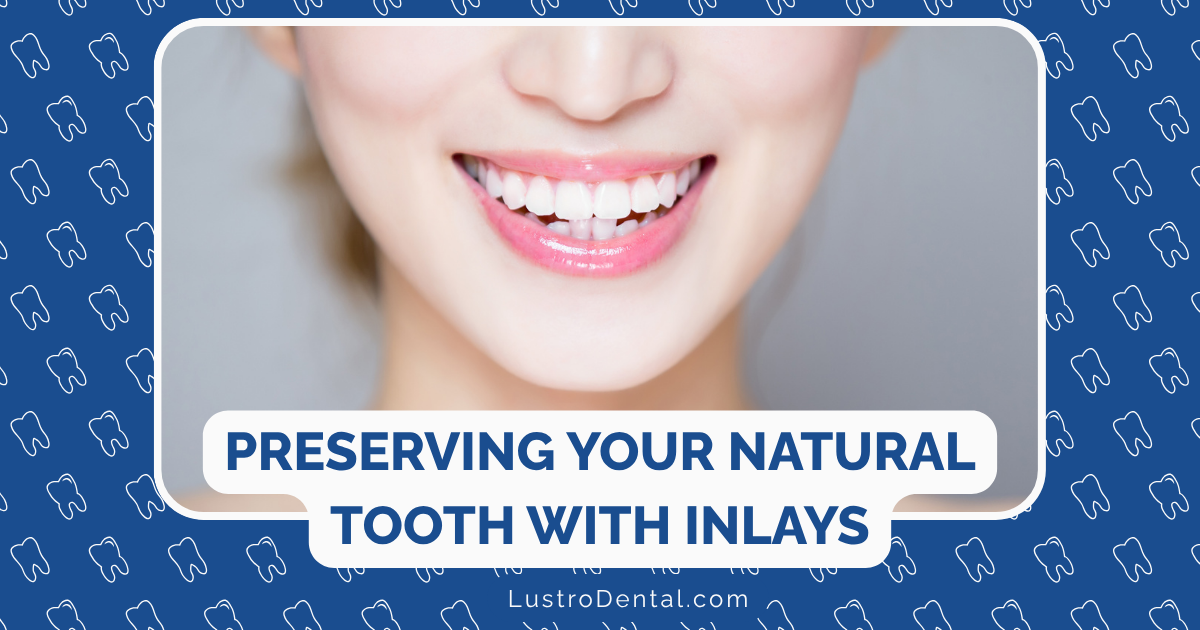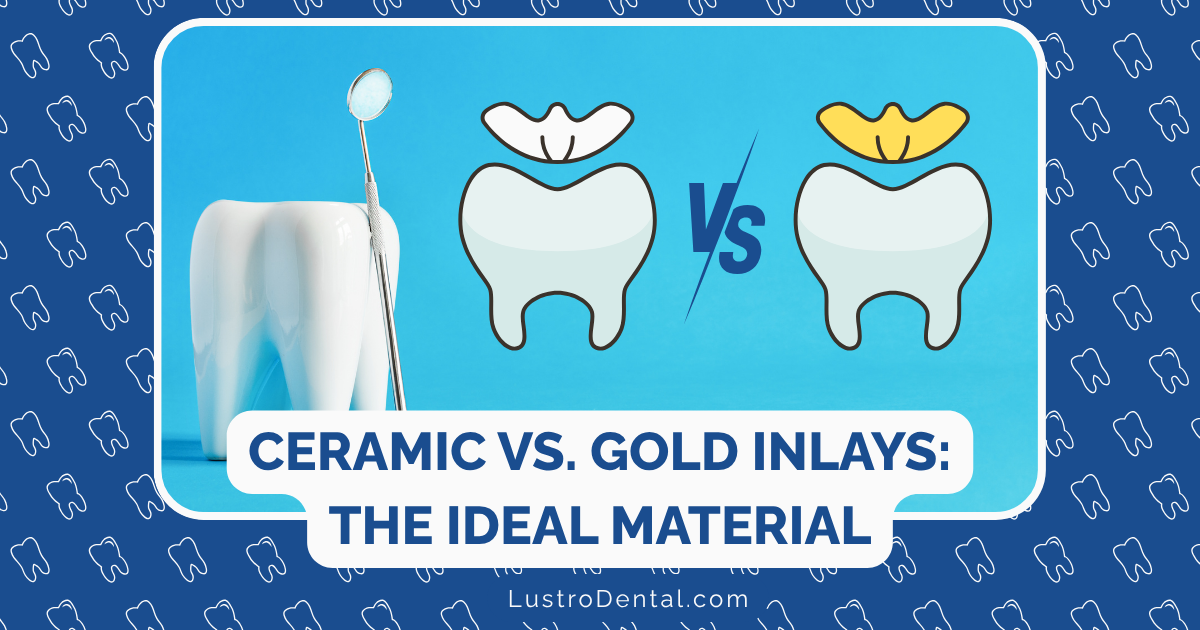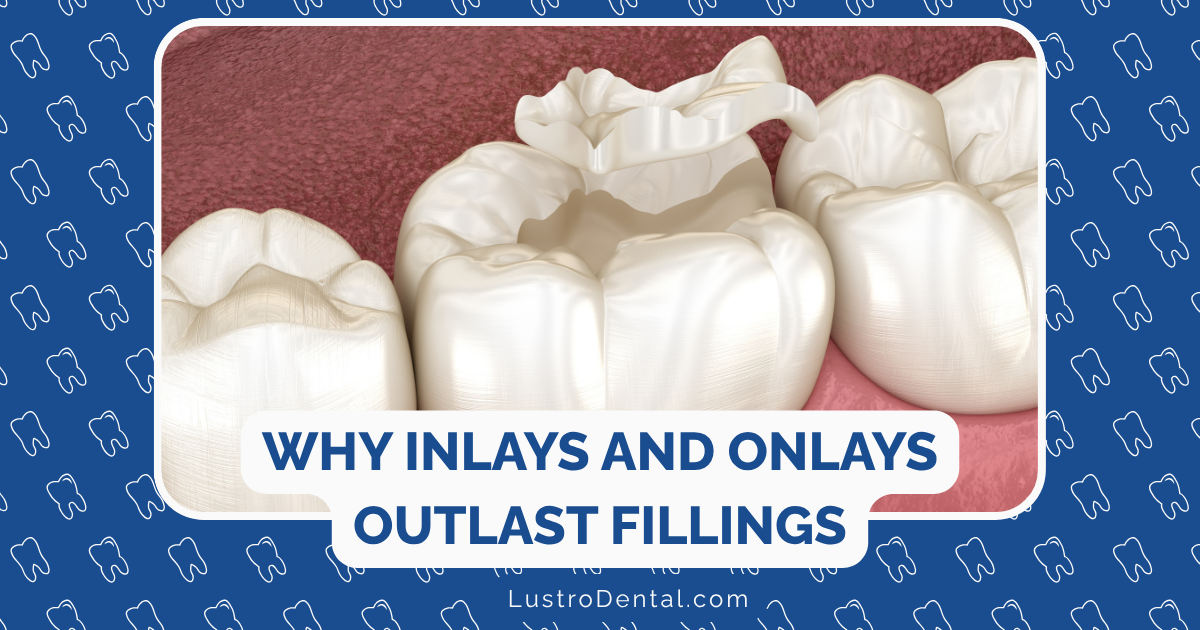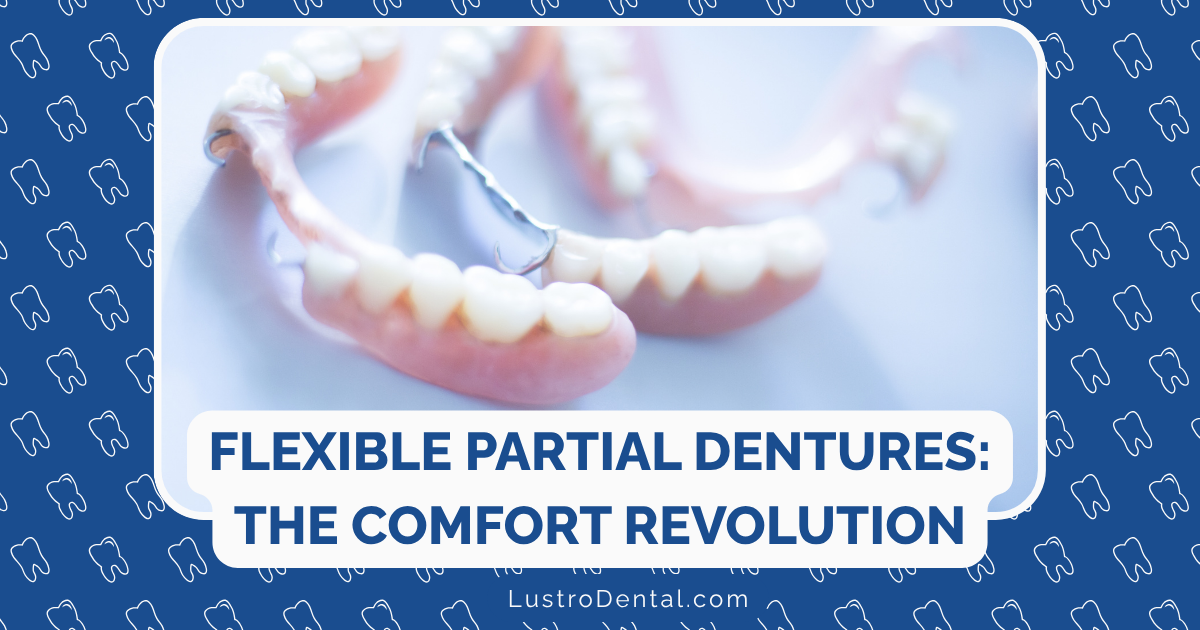Preserving Tooth Structure: Why Dentists Recommend Inlays Over Crowns When Possible

In modern dentistry, there’s a growing emphasis on conservation—preserving as much of your natural tooth structure as possible. This philosophy has led many dentists to recommend inlays over crowns when the clinical situation allows. But why is preserving tooth structure so important, and what makes inlays a more conservative option than crowns in many cases?
As someone who’s guided countless patients through these treatment decisions, I can tell you that the choice between an inlay and a crown isn’t just about fixing a problem today—it’s about setting your teeth up for long-term health and function. Let’s explore why dentists are increasingly recommending inlays as a tooth-preserving alternative to crowns when circumstances permit.
The Fundamental Difference: How Inlays and Crowns Affect Tooth Structure
To understand why preservation matters, let’s first look at how inlays and crowns differ in their approach to restoring damaged teeth:
Inlays: The Conservative Approach
Dental inlays are custom-made restorations that fit precisely within the contours of a prepared tooth, typically used when damage is too extensive for a filling but not severe enough to require a crown. They’re crafted in a dental laboratory or with CAD/CAM technology and then bonded to the tooth.
Key characteristics of inlays include:
- Minimal tooth reduction: Only damaged or decayed portions are removed
- Preservation of cusps: The natural cusps (points) of the tooth remain intact
- Internal restoration: The inlay sits within the tooth rather than covering it
- Precise fit: Custom-made to match the exact contours of the prepared cavity
Crowns: The Full-Coverage Solution
Dental crowns, by contrast, are full-coverage restorations that encase the entire visible portion of a tooth above the gumline. They’re used when a tooth is severely damaged, weakened, or aesthetically compromised.
Key characteristics of crowns include:
- Significant tooth reduction: Approximately 63-76% of the natural tooth structure is removed
- Circumferential preparation: The entire tooth is reduced on all sides
- External coverage: The crown sits over the tooth rather than within it
- Complete replacement: The crown replaces the entire external structure of the tooth
Dr. Sarah Johnson, a prosthodontist at the American College of Prosthodontists, explains: “The fundamental difference between inlays and crowns is the amount of healthy tooth structure that must be sacrificed. With inlays, we’re often removing only the damaged portions, while crowns require us to reduce healthy tooth structure to create space for the restoration.”
Why Preserving Tooth Structure Matters: The Long-Term Benefits
The conservation of natural tooth structure isn’t just a philosophical preference—it offers tangible, evidence-based benefits for long-term oral health:
1. Structural Integrity and Strength
Natural teeth derive much of their strength from their intact structure. Each time tooth structure is removed, the tooth becomes incrementally weaker.
Research published in the Journal of Prosthetic Dentistry found that teeth restored with inlays retained approximately 70-80% of their original structural strength, while teeth prepared for crowns retained only 30-40%.
“Think of your tooth like a hollowed-out eggshell,” explains Dr. Michael Chen of the Academy of Biomimetic Dentistry. “The more structure you remove, the more fragile it becomes, regardless of what you place over it. No dental material can fully replicate the biomechanical properties of natural tooth structure.”
2. Pulpal Health and Vitality
The dental pulp—the living tissue inside your tooth containing nerves and blood vessels—is better protected when more tooth structure remains.
A 2023 study in the International Endodontic Journal found that teeth restored with inlays had a 5-10% likelihood of requiring root canal treatment within 10 years, compared to 15-25% for teeth restored with crowns. This difference is attributed to:
- Less trauma during preparation
- Reduced heat generation during tooth reduction
- Maintenance of thicker dentin layer protecting the pulp
- Less microbial leakage at restoration margins
3. Better Long-Term Prognosis
Teeth that retain more of their natural structure tend to have better long-term outcomes.
According to research from the Journal of Dental Research, the 15-year survival rate for teeth restored with inlays is approximately 85-90%, compared to 75-85% for teeth restored with crowns. This difference becomes even more pronounced when looking at 20+ year outcomes.
4. Future Restoration Options
Perhaps one of the most important benefits of preserving tooth structure is maintaining options for future treatment.
Dr. Lisa Rodriguez, a conservative dentistry specialist at Minimally Invasive Dental Solutions, notes: “Every dental restoration has a finite lifespan. When that restoration eventually needs replacement, having preserved more tooth structure initially gives us more options for subsequent treatments. A tooth that started with an inlay might still be restorable with another inlay 15 years later, while a tooth that started with a crown might require more aggressive treatment like a post, core, and new crown—or even extraction if insufficient structure remains.”
Clinical Situations: When Inlays Are Preferred Over Crowns
While crowns remain necessary in certain situations, there are many clinical scenarios where inlays provide adequate restoration while preserving valuable tooth structure:
1. Moderate-Sized Cavities
When decay or damage is too extensive for a direct filling but doesn’t compromise the cusps of the tooth, an inlay is often ideal. This commonly occurs in:
- Large interproximal (between teeth) cavities
- Failed or deteriorating fillings
- Moderate occlusal (biting surface) decay
2. Teeth with Strong Remaining Structure
Teeth with substantial healthy structure remaining are perfect candidates for inlays. The preservation approach is particularly valuable for:
- First-time restorations (versus previously crowned teeth)
- Teeth with intact cusps and walls
- Premolars and molars with moderate decay
3. Patients with Good Oral Hygiene
Inlays work best in patients who maintain excellent oral hygiene, as the margins (edges) of the restoration are critical to long-term success. Ideal candidates include:
- Patients with low cavity risk
- Those who brush and floss regularly
- Patients who attend regular dental check-ups
4. Aesthetic Concerns in Visible Areas
For teeth that are visible when smiling but require more than a simple filling, tooth-colored inlays offer an aesthetic solution that preserves structure:
- Premolars visible in a wide smile
- Molars visible during speaking or laughing
- Situations requiring precise color matching
When Crowns Remain Necessary: Recognizing the Limitations of Inlays
Despite the benefits of preservation, there are situations where crowns remain the treatment of choice:
1. Extensively Damaged Teeth
When a tooth has lost significant structure due to decay, fracture, or previous restorations, a crown may be necessary to provide adequate protection:
- Teeth with multiple large existing restorations
- Cracked teeth requiring complete coverage
- Teeth with compromised cusps
2. Following Root Canal Treatment
Teeth that have undergone root canal therapy are often more brittle and may require the protection of a full crown:
- Posterior teeth after endodontic treatment
- Teeth with significant loss of structure during access
- Situations where cuspal coverage is essential for protection
3. Severe Aesthetic Issues
When a tooth has significant discoloration, shape issues, or other aesthetic concerns that cannot be addressed with more conservative options:
- Teeth with intrinsic staining resistant to whitening
- Malformed or misshapen teeth
- Teeth requiring significant contour modification
The Scientific Evidence: Research Supporting Conservation
The shift toward more conservative approaches isn’t just philosophical—it’s backed by substantial research:
A 2023 systematic review published in the Journal of Conservative Dentistry analyzed 24 clinical studies comparing inlays and crowns over periods ranging from 5 to 20 years. The findings strongly supported the conservative approach:
- Inlays demonstrated equivalent or better survival rates compared to crowns for moderately damaged teeth
- Teeth restored with inlays showed significantly lower rates of catastrophic failure (those requiring extraction)
- Pulpal complications were approximately 60% less common in teeth restored with inlays
- Patient-reported outcomes, including sensitivity and comfort, favored inlays
Dr. James Wilson of the International Academy of Adhesive Dentistry summarizes: “The research is clear—when the clinical situation allows for either an inlay or a crown, the conservation of tooth structure achieved with an inlay translates to better long-term outcomes for the tooth.”
Material Considerations: Options for Inlays
The material chosen for an inlay can affect both its durability and how much tooth structure can be preserved:
Ceramic/Porcelain Inlays
Ceramic materials offer excellent aesthetics and good durability:
- Preservation benefit: Require minimal preparation beyond removing decay
- Bonding strength: Create strong bonds with tooth structure
- Longevity: Typically last 10-15 years with proper care
- Aesthetics: Virtually indistinguishable from natural tooth structure
Composite Resin Inlays
Laboratory-processed composite inlays offer a balance of conservation and strength:
- Preservation benefit: Most conservative in terms of preparation
- Repair potential: Can be repaired if damaged
- Wear compatibility: Similar wear characteristics to natural teeth
- Cost-effectiveness: Generally less expensive than ceramic or gold
Gold Inlays
Though less common today due to aesthetics and cost, gold remains an excellent option:
- Preservation benefit: Requires minimal reduction beyond decay removal
- Exceptional durability: Can last 20+ years
- Wear compatibility: Wears at a rate similar to natural enamel
- Marginal integrity: Maintains excellent margins long-term
Dr. Jennifer Martinez of the American Academy of Gold Foil Operators notes: “While gold has fallen out of favor aesthetically, it remains one of the most conservative and durable materials available. For posterior teeth where aesthetics aren’t primary, gold inlays offer unmatched longevity while preserving maximum tooth structure.”
The Procedure Comparison: Inlays vs. Crowns
Understanding the procedural differences helps illustrate why inlays preserve more tooth structure:
Inlay Procedure
- Conservative preparation: Only damaged tissue and minimal surrounding structure is removed
- Impression or digital scan: Captures the prepared cavity
- Temporary filling (if needed): Protects the tooth until the inlay is ready
- Bonding: The inlay is adhesively bonded within the prepared cavity
Crown Procedure
- Extensive preparation: The entire tooth is reduced by 1-2mm on all surfaces
- Impression or digital scan: Captures the prepared tooth
- Temporary crown: Covers the extensively prepared tooth
- Cementation: The crown is cemented over the prepared tooth
The key difference is evident in the first step—inlays require removal of only damaged tissue, while crowns necessitate significant reduction of healthy structure to create space for the restoration material.
Cost and Insurance Considerations
While preserving tooth structure offers clear clinical benefits, practical considerations like cost and insurance coverage often influence treatment decisions:
Comparative Costs (Average 2025 Figures)
- Inlays: $650-$1,200 per tooth
- Crowns: $1,000-$1,500 per tooth
Insurance Coverage
Many dental insurance plans cover both inlays and crowns, but coverage details can vary:
- Inlays are sometimes covered at a lower percentage than crowns
- Some plans categorize inlays as “alternative benefits” and only cover them up to the cost of a filling
- Crowns may have more straightforward coverage criteria
Dr. Robert Wilson, a dental insurance specialist at Dental Economics Institute, advises: “While insurance considerations are valid, they shouldn’t be the primary factor in choosing between an inlay and a crown. The long-term health benefit of preserving tooth structure often outweighs any short-term financial advantage of choosing a crown based solely on insurance coverage.”
Patient Education: Communicating the Value of Conservation
One challenge dentists face is helping patients understand the value of preserving tooth structure, especially when an inlay might cost more than a filling but less than a crown.
Effective communication approaches include:
- Visual demonstrations: Using models to show the difference in tooth reduction
- Long-term perspective: Explaining the future benefits of conservation
- Analogies: Comparing tooth structure to the foundation of a house—once removed, it can’t be replaced
- Digital imaging: Showing patients visual representations of different treatment options
Dr. Lisa Nguyen of the Academy of Biomimetic Dentistry suggests: “Patients who understand that their natural tooth structure is irreplaceable tend to value conservative approaches more highly. Taking time to educate patients about the long-term benefits of preservation leads to better-informed decisions and greater satisfaction with conservative treatments.”
The Future of Conservative Dentistry
The trend toward tooth preservation continues to grow, with several emerging technologies making conservative approaches even more effective:
Advanced Bonding Agents
New-generation dental adhesives are creating stronger, more durable bonds between restorations and tooth structure, making conservative restorations more predictable.
Bioactive Materials
Materials that actively promote remineralization and healing of surrounding tooth structure are making conservative approaches more successful for managing decay.
Digital Workflows
CAD/CAM technology is enabling more precise, conservative preparations and restorations that maximize preservation while ensuring excellent fit.
Minimally Invasive Preparation Techniques
New preparation designs and techniques are being developed specifically to maximize conservation of tooth structure while ensuring restoration longevity.
Conclusion: The Conservative Approach to Tooth Restoration
The shift toward preserving natural tooth structure represents one of the most significant advances in modern dentistry. When the clinical situation allows, inlays offer a conservative alternative to crowns that maintains more of your natural tooth structure while still providing durable, functional, and aesthetic restorations.
As Dr. Michael Chen summarizes: “The best dental material ever created is the one you’re born with—natural tooth structure. Our job as dentists is to preserve as much of that structure as possible while restoring function and aesthetics. When we can use an inlay instead of a crown, we’re honoring that principle of preservation.”
By understanding the value of tooth structure preservation and the benefits of conservative approaches like inlays, you can make more informed decisions about your dental care and partner with your dentist to maintain the health and integrity of your natural teeth for as long as possible.







